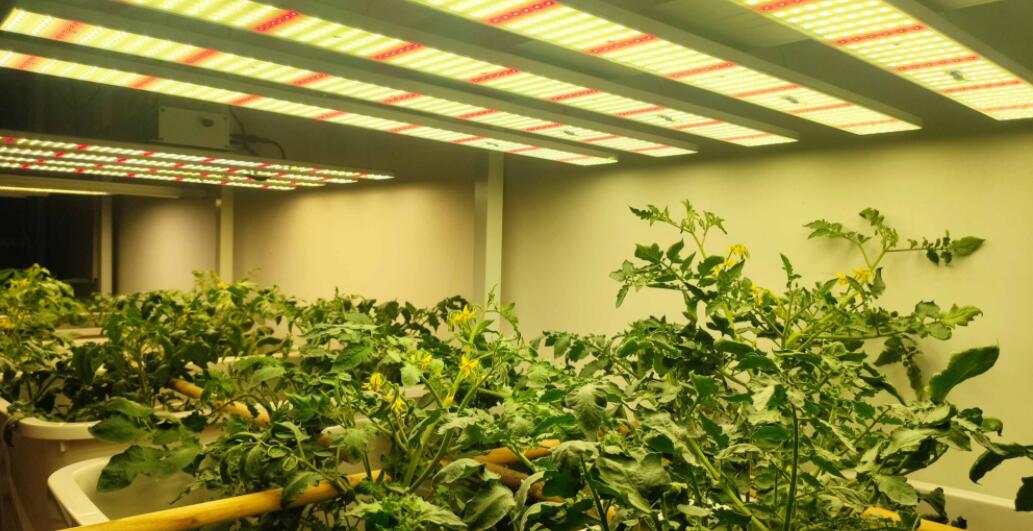- Obstructed in the short term, the future can be expected
However, since the third quarter of 2021, red LED chips for plants have been squeezed out by the market demand for automotive and infrared LEDs and there has been a shortage, especially in high-end chips. At the same time, power driver ICs are still out of stock, shipping schedule delays and North America's crackdown on illegal indoor cannabis growers have also affected the performance of terminal product shipments, causing some LED plant lighting manufacturers to slow down their production plans and material stocking efforts.
Traditional lighting VS plant lighting: higher requirements and higher threshold
LED plant lighting is very different from traditional lighting, mainly in terms of usage scenarios, performance, technology, etc. This also makes LED plant lighting have a higher industry threshold.

Plant lighting products put forward higher requirements for system R&D capabilities, independent innovation capabilities, quality and cost control capabilities. Among them, the difference between technology R&D and other lighting products lies in the design of light formulas. In terms of chips, plant lighting The main focus of the product is photosynthetic photon efficacy PPE/photosynthetic photon flux PPF, while general lighting mainly focuses on issues such as LM and anti-blue light.
For the different purposes, customers have different requirements for chip performance. LED plant lighting requires chips with higher light efficiency and higher reliability. When pursuing the light efficiency of 230lm/w, it is necessary to use specially optimized substrates, flip-chips, special mirrors and other technologies; when pursuing high reliability, the selection of process control and key raw materials is proposed Very high requirements. On the packaging side, the biggest difficulty in entering the LED plant lighting market lies in the development and production of a set of high-yield, high-quality LED plant light sources or lamps, which need to solve the integration and development of intelligent control of the light environment, plant photobiology, and LED semiconductor technology. The problem.
The difference between plant lighting and traditional lighting is that plant lighting is more in line with the growth characteristics of plants. It needs to be considered from the perspective of bio-optics, not only to match the needs of different plants for PPE/PPFD, but also to combine the growth of plants at different stages To adjust the spectrum formula, Entering the plant lighting market not only requires technical reserves of light sources and modules, but also needs to understand the market and policy trends. In addition, for different regions, different plant species, and different growth stages of the same plant, it is necessary to establish the most suitable and efficient "light formula" database and corresponding programs, so the stickiness between the supplier and the demander is also higher.
Plant lighting is based on high-power and high-efficiency products, which require companies to accumulate for a long time in LED packaging technology. At the same time, customers have high requirements for the life of LED plant lighting products, and the products need 5-10 years of quality assurance. Lighting products are special lighting products for plant lighting occasions. For example, according to the application object of plant lighting, it is necessary to design a spectrum that can cause a specific response of plants; according to the particularity of the spectrum, it is necessary to use the rich and adjustable spectrum performance of LED to achieve And optimize the spectrum. From the perspective of packaging, excellent packaging technology is required to achieve high light quantum efficiency and high reliability products, and excellent optical design is also required to maximize light distribution and intensity.
In terms of power supply, there are three thresholds in the field of LED plant lighting drive.
1.Technical threshold. Plant lighting drivers are developing in the direction of higher power. At present, the power supply on the market has reached 1200W, and it may increase again in the future. This poses a great challenge to the high-power driver design and production capacity of new manufacturers.
2.The threshold of intelligent design. Plants need different light in different growth stages, and the requirements for light control are the requirements for intelligent control of power.
3.Market threshold. It is reported that both the product quality and the enterprise itself are facing the problem of customer trust and recognition. If there is no suitable entry point, the customer will not rush to introduce a new manufacturer as a supplier.
The input-output ratio becomes the focus of the terminal's attention.
The recognition and acceptance of LED plant lighting technology by end growers has reached a high level, and the willingness to use LED plant lighting is becoming stronger. However, the initial investment in LED plant lighting is relatively high, and the input-output ratio has become a terminal grower. The main concern. In the application scenario of plant lighting, electricity bills account for the highest proportion of customer expenditures. Therefore, the current difficulty of promotion focuses on how to balance the contradiction between short-term cost increase and long-term benefit release.
As the traditional lighting business is gradually approaching the ceiling, LED plant lighting has become a new niche for enterprise development. At present, LED plant lighting is in its infancy, but we believe that it will be affected by external factors such as population growth, insufficient arable land, uneven arable land, food safety, environmental pollution, climate change, and the further maturity and cost of LED plant lighting technology. Driven by internal factors such as further decline, LED plant lighting will flourish and bring healthier and higher-quality things to all mankind.
Post time: Dec-28-2021

